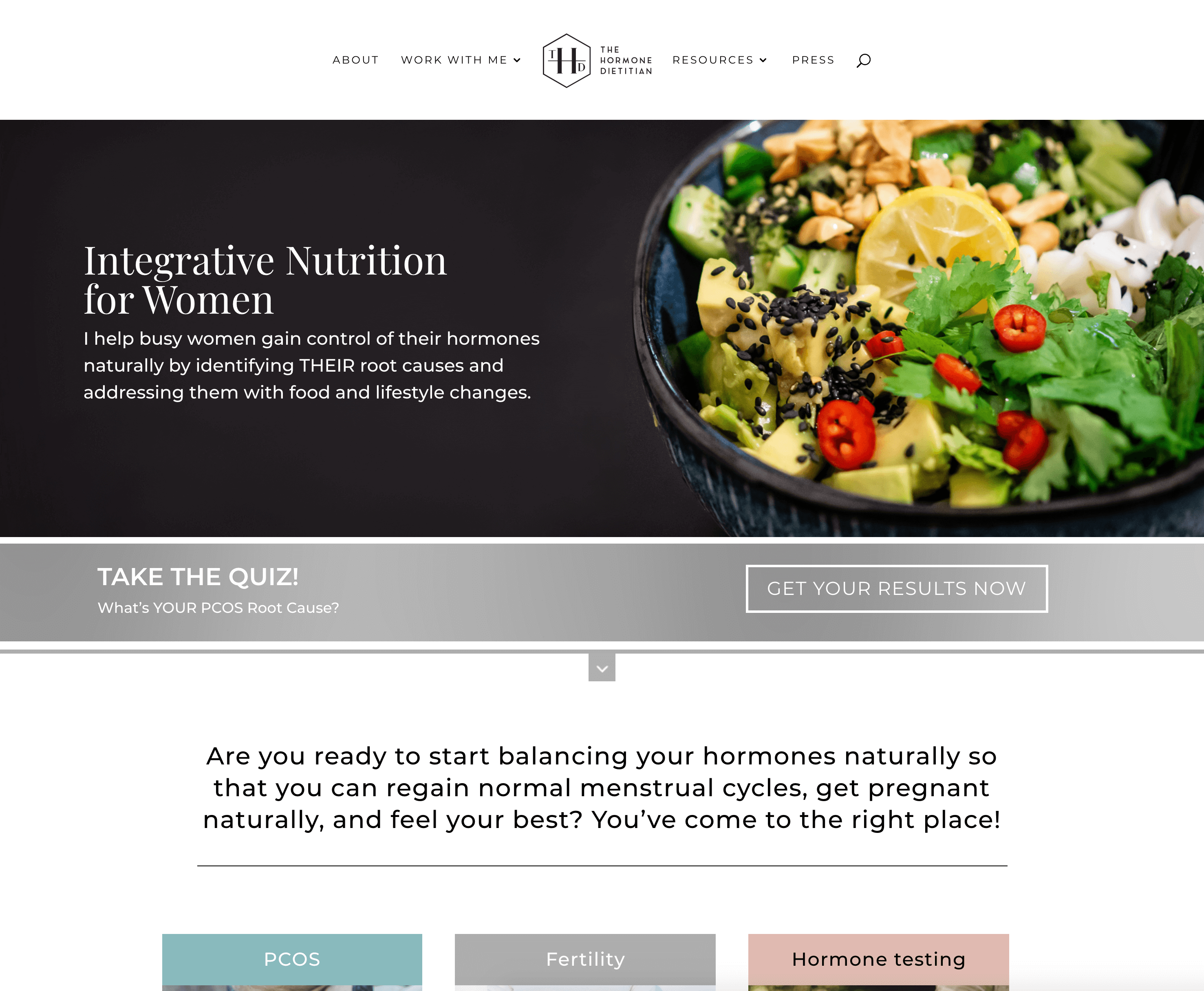
There are many meal delivery companies that deliver vegetarian meals if you don't have the time or desire to cook. Hungryroot (Daily Harvest), Veestro, Veestro, Sprinly, and Veestro are a few examples. You can choose from a variety of different meals and customize them to suit your needs.
Hungryroot
Hungryroot might be a good option for vegetarian meal delivery services. The company allows you to customize the menu for every delivery and has a number of subscription options. Each subscription comes with 3-4 recipes. The recipes are simple and require only a few ingredients. You can choose the day of delivery to tailor your subscription.
Hungryroot subscriptions cost vary depending on the size and content of your box. Subscribers with larger boxes cost around $60, while subscriptions with smaller boxes cost $59 or less. Each meal contains three- to four servings and a few snacks. Hungryroot will send your box for one week or one month. You can cancel your subscription at anytime.
Sprinly
Sprinly provides delivery of vegetarian and vegan meals. Its weekly meals are organic, and curated by nutritionists to provide the best nutrients. Each meal has fun facts about each ingredient and is clearly labeled with its nutrients. Customers can also choose whether to have their meals warm or cold.

Each menu contains a brief summary, ingredients list and nutritional facts. Sprinly ships in select areas of the United States. However they are currently looking to expand their reach to more regions.
Veestro
Veestro does not offer the only vegetarian meal delivery option. Veestro's founders are passionate about food and believe you are what your eat. Their commitment to quality ingredients is what drives them to provide the highest quality meals. Their customers are also important to them and they will do their best to make sure that they are satisfied.
Veestro foods are only made from natural ingredients. They are also free from refined sugars and processed carbs. You can also choose to omit certain nutrients, if you want. Meals usually contain between 250 and 800 calories. Veestro meals arrive in medium-sized, insulated boxes. They are protected in dry-ice and have their nutritional content printed on the package. They can be reheated in your microwave or on the stovetop. The cook time will vary depending upon the recipe.
Daily Harvest
Daily Harvest, a meal delivery service that delivers plant-based meals, specializes in vegetarian and vegan meals. Although it was initially founded to deliver smoothies, the company now offers flatbreads as well as soups and other whole-foods meals. To ensure you feel full, the company uses recipes created by nutritionists. Each meal's ingredients are clearly labeled so that you can quickly identify what they are.
Daily Harvest charges the same price as other delivery services for meals. Although the portions aren't huge, they can be enough for one person. There are discounts for customers who order more than one item. Daily Harvest is a great choice for busy professionals, vegans, or people who eat vegetarian food.

Sakara Life
Sakara Life is an excellent choice if you are looking for a vegetarian meal delivery company. Sakara Life offers delicious meals that are ready to eat. Each meal is designed using the science behind whole food, plant-based diets. Ingredients include organic whole grains, protein from plant-based sources, and nutrient-dense superfoods. The meals are also organic and gluten-free. Sakara Life also offers cleansing services and some dietary supplement options. The company is clearly aimed at women and has a vibe similar to Goop, Elle, or Women's Health.
Customers can access their account online and make changes to the meal program at any moment. They can also request a swap of meals if they don't enjoy a particular dish. However, if you're planning on modifying your meal plan, it's best to contact Sakara Life in advance so you know exactly what you'll be getting every week.
FAQ
What are the 7 keys to a healthy, happy life?
-
Eat right
-
Exercise regularly
-
Rest well
-
Drink lots of water
-
Get enough rest
-
Be happy
-
Smile often
What can I do to boost my immune system?
The human body is composed of trillions if not billions of cells. These cells combine to form organs or tissues that serve specific functions. One cell is replaced by another when it dies. Cells communicate with one another using chemical signals called hormonal hormones. Hormones regulate all bodily processes, from growth and development to metabolism and immunity.
Hormones are chemicals secreted by glands throughout the body. They travel through blood stream and act as messengers that control the function of our bodies. Some hormones can be produced within the body while others can be made outside.
Hormone production begins when a hormone-producing gland releases its contents into the bloodstream. Once hormones are released they move through the bloodstream until reaching their target organ. Some hormones are only active for a brief time. Others hormones are more active and have a longer life expectancy. They can still influence the body's functions long after they have been eliminated from the bloodstream.
Some hormones can only be produced in large quantities. Others are only produced in very small quantities.
Certain hormones are only produced at certain times in life. Estrogen is one example. It's produced in puberty, pregnancy and menopause. Estrogen assists women with breast development, bone density, and osteoporosis prevention. It also promotes hair growth and keeps skin smooth and soft.
Which lifestyle is best for your health?
Healthy lifestyles include eating healthy food, regular exercise, good sleep, and avoiding stress. You can live a long and healthy lifestyle if these guidelines are followed.
It's easy to start small with your exercise and diet. You can lose weight by walking 30 minutes each day if you are looking to lose weight. Or, if you want to get more active, take up swimming or dancing. An online fitness program, such as Strava and Fitbit, can help you track your activity.
What should you eat?
You should eat lots of vegetables and fruits. They contain vitamins and minerals which help keep your immune system strong. Additionally, vegetables and fruits are high fiber. This helps to fill up and aids in digestion. At least five servings of fruits and vegetables should be consumed each day.
Make sure you drink plenty of water too. Water flushes toxins from the body and gives you a full feeling between meals. Drink about eight glasses each day.
Consume whole grains and not refined. Whole grains are rich in nutrients such as iron, zinc and magnesium. Refined grains are stripped of some of their nutritional value.
Avoid sugary drinks. Sugary drinks are high in empty calories and can lead to obesity. Choose water, milk or unsweetened tea instead.
Avoid fast food. Fast food lacks nutritional value. It may taste great but it won't give you the energy you need to function properly. Stick to healthier options such as salads, soups, sandwiches, and pasta dishes.
Limit alcohol consumption. Avoid alcohol as it can cause empty calories and poor nutrition. Limit the amount of alcohol you consume in a given week to no more than 2 alcoholic beverages.
Try to cut down on red meat. Red meats are high in saturated fat and cholesterol. Choose lean cuts such as beef, pork and lamb, chicken, fish, or turkey.
Do I have to count calories?
You may be wondering "what is the best diet for you?" or "is counting calories necessary?" This depends on several factors like your current health and personal goals. Your preferences and overall lifestyle.
The Best Diet for me - Which One Is Right for You?
The best diet for me depends on my current health status, my personal goals, my preferences, and my overall lifestyle. There are many good and bad diets. Some diets work better than others. What should I do? How do I make the right choice
This article aims at answering these questions. This article begins with a brief overview of the various types of diets that are available today. The pros and cons of each diet are then discussed. Finally, we'll look into how to choose the best one for you.
Let's first take a look at different diets.
Diet Types
There are three main types: low fat, high proteins, and ketogenic. Let's look at each one briefly.
Low Fat Diets
A low-fat diet is one that limits the intake of fats. This is accomplished by decreasing the intake of saturated fats like butter, cream cheese, and other dairy products. and replacing them with unsaturated fats (olive oil, avocados, etc.). A low fat diet is often recommended for those who want to lose weight quickly and easily. This kind of diet could cause constipation or heartburn and other digestive problems. In addition, it may lead to vitamin deficiencies if a person doesn't get enough vitamins from their food.
High Protein Diets
High protein diets discourage carbohydrates and encourage the use of proteins. These diets have higher protein levels than other diets. They are meant to help build muscle mass and burn more calories. However, they might not provide enough nutrition for those who need to eat frequently. They are not suitable for all people because they can be restrictive.
Ketogenic Diets
The ketogenic diet is also known by the keto diet. They are high on fat but low in carbs and proteins. They are commonly used by athletes and bodybuilders as they allow them to train harder, longer and without feeling fatigued. To avoid side effects such as fatigue, nausea, headaches, or other unpleasant side effects, you must strictly adhere to their instructions.
Statistics
- According to the Physical Activity Guidelines for Americans, we should strive for at least 150 minutes of moderate intensity activity each week (54Trusted Source Smoking, harmful use of drugs, and alcohol abuse can all seriously negatively affect your health. (healthline.com)
- WHO recommends consuming less than 5% of total energy intake for additional health benefits. (who.int)
- According to the 2020 Dietary Guidelines for Americans, a balanced diet high in fruits and vegetables, lean protein, low-fat dairy and whole grains is needed for optimal energy. (mayoclinichealthsystem.org)
- This article received 11 testimonials and 86% of readers who voted found it helpful, earning it our reader-approved status. (wikihow.com)
External Links
How To
What does "vitamin" actually mean?
Vitamins are organic compounds naturally found in food. Vitamins help us absorb nutrients from foods we eat. Vitamins cannot come from the body so food must provide them.
There are two types: water-soluble and fat-soluble vitamins. Water-soluble vitamins dissolve readily in water. Examples include vitamin C,B1 (thiamine), B2 (riboflavin), B3 (niacin), B6 (pyridoxine), folic acid, biotin, pantothenic acid, and choline. Fat soluble vitamins are stored in the liver and fatty tissue. Some examples include vitamin D and E, K, A, beta carotene, and A-vitamins.
Vitamins are classified according their biological activity. There are eight main types of vitamins:
-
A - Vital for healthy growth.
-
C is important for nerve function and energy production.
-
D – Essential for healthy teeth, bones and joints
-
E is required for good vision and reproduction.
-
K – Required for healthy muscles & nerves.
-
P - vital for building strong bones andteeth.
-
Q - aids digestion, absorption and absorption iron
-
R is required for the production of red blood cells.
The recommended daily allowance (RDA) of vitamins varies depending on age, gender, and physical condition. RDA values are set by the U.S. Food and Drug Administration (FDA).
For adults aged 19 or older, the RDA of vitamin A is 400mg per day. Because it is essential for the development of the fetus, pregnant women should consume 600 micrograms per days. Children ages 1-8 require 900 micrograms per day. Infants below one year of age need 700 micrograms daily. But, between 9 months to 12 months of age, the amount drops to 500micrograms per days.
Children aged 1-18 years need 800 micrograms daily, while children overweight require 1000 micrograms per days. Children who are severely obese or underweight will need 1200 micrograms each day.
Children aged 4-8 years old who have been diagnosed as having anemia require 2200 micrograms of vitamin C per day.
2000 micrograms daily is required for adults over 50 to maintain their general health. Breastfeeding or pregnant women require 3000 micrograms per daily due to higher nutrient demands.
Adults over 70 need 1500 micrograms daily, since they lose around 10% of their muscle mass every decade.
Women who are pregnant and lactating need more nutrients than the RDA. Pregnant and breastfeeding women require 4000 micrograms each day during pregnancy and 2500 Micrograms each day after birth. Breastfeeding mothers need 5000 micrograms per day when breast milk is being produced.